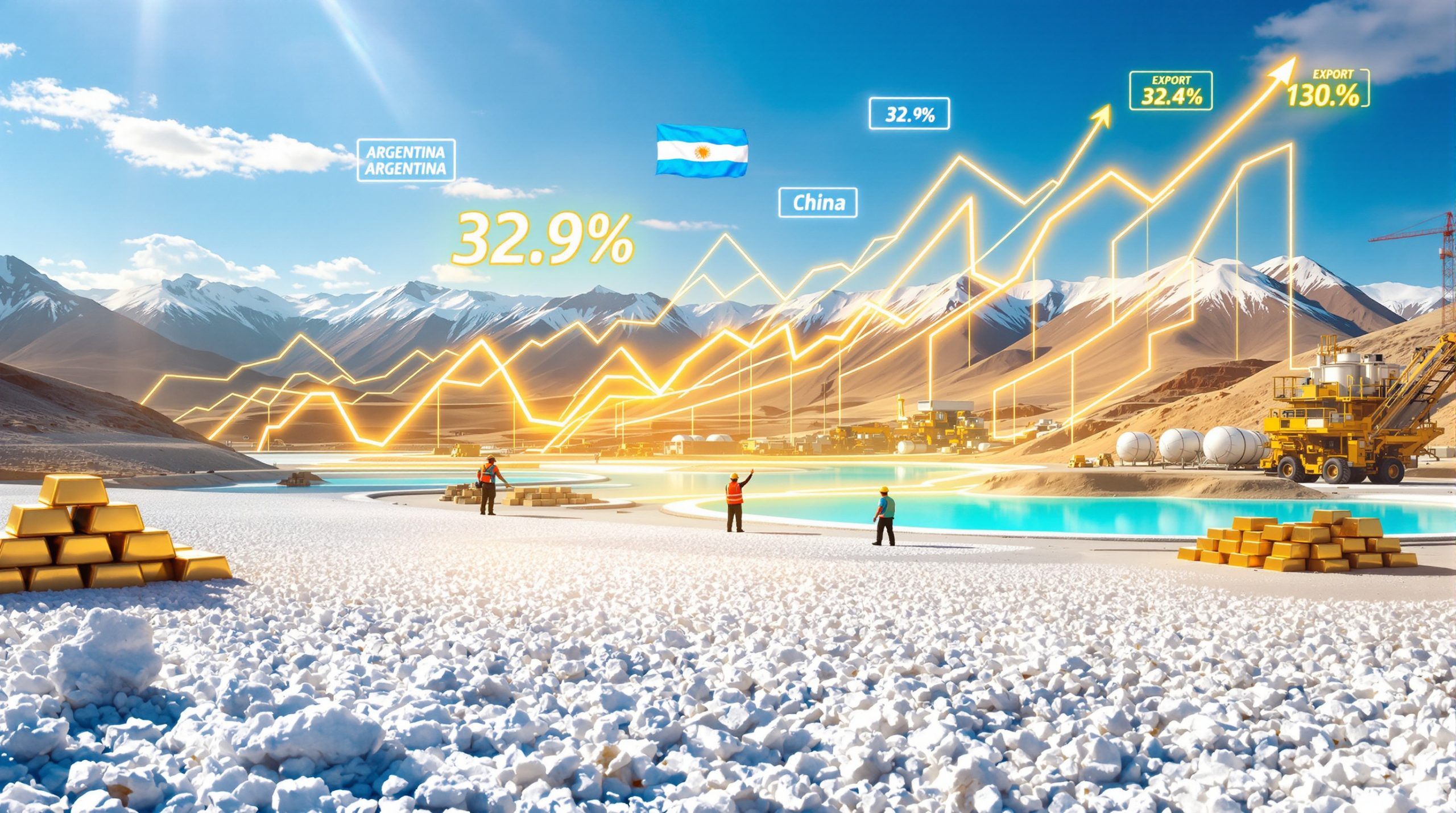What Factors Are Driving Gold to New Record Highs?
Gold has been on an extraordinary trajectory, recently smashing through previous records to reach an unprecedented gold price record high of $3,431 per ounce. This remarkable 2.89% single-day surge of over $100 has captivated investors worldwide, prompting analysts to examine the fundamental drivers behind gold's meteoric rise in 2025.
Central Bank Accumulation and Institutional Demand
A key factor propelling gold to new heights is the unprecedented level of central bank purchases. According to the World Gold Council, central banks acquired a staggering 1,136 tonnes of gold in 2023, marking the 14th consecutive year of net buying. This trend has accelerated in 2025, with China's central bank alone adding 95 tonnes in Q1, continuing its strategic diversification away from US dollar reserves.
"Central bank demand and institutional 'whale' activity create structural support for gold prices," noted Kenny from CNBC, highlighting the structural shift occurring in global monetary reserves. This institutional buying creates persistent upward pressure through what the IMF describes as "inelastic supply dynamics," where increased demand meets relatively fixed supply.
High-net-worth platforms are witnessing extraordinary interest in precious metals. Boing Reserve reported a 200% year-over-year increase in gold acquisitions by affluent investors during Q1 2025. These "big whales" are making strategic moves to shelter wealth from currency fluctuations and geopolitical instability.
Dollar Weakness and Currency Concerns
The weakening US dollar has established a clear inverse correlation with gold's ascent. The US Dollar Index (DXY) fell to 94.2 in April 2025, its lowest level since 2021, directly contributing to gold's appeal.
This currency weakness reflects growing skepticism about centralized monetary systems. Bitcoin's parallel rise to $120,000 in 2025 underscores a broader flight to decentralized assets, with investors seeking alternatives to government-controlled currencies. The 90-day correlation between gold and Bitcoin reached 0.6, demonstrating their shared appeal as monetary alternatives.
Ray Dalio of Bridgewater Associates succinctly captured gold's unique position: "Gold is the only asset class not simultaneously someone else's liability during geopolitical crises," explaining why institutional investors increasingly view physical gold as portfolio insurance rather than merely a tactical position.
Political Tensions with Federal Reserve
Unprecedented political pressure on the Federal Reserve has heightened market uncertainty. Threats to fire Fed Chair Jerome Powell have raised serious concerns about central bank independence—a cornerstone of modern monetary policy.
The Federal Reserve's analysis warns that "political pressure on Fed independence undermines confidence in fiat currencies, amplifying gold's appeal." This erosion of trust in monetary institutions has investors questioning long-term currency stability.
Debates over interest rate policy have intensified as inflation reached 4.8% year-over-year in March 2025, while the Fed funds rate remained at 5.5%. Jerome Powell stated, "Tariffs may add 0.5% to inflation but won't alter our dual mandate focus," highlighting the tensions between political demands and monetary discipline.
How Significant Is Gold's Current Price Movement?
Breaking Through Key Price Barriers
Gold's breach of $3,431 per ounce represents more than just a new nominal high—it signals a fundamental revaluation of the precious metal. The April 2025 surge of 2.89% in a single trading session demonstrates remarkable momentum, particularly against the backdrop of mixed performance across other asset classes.
Goldman Sachs' Commodity Team observed, "Gold's 2025 rally outpaces the 2011–2012 surge, driven by unique macro risks." This historical context is crucial—gold's 30% year-to-date gain in 2025 dwarfs the 11% increase during the 2011 European debt crisis, suggesting stronger underlying drivers.
Technical analysts note that gold's 50-day moving average crossed above the 200-day average in January 2025, triggering a "golden cross" pattern that signaled the current bullish trend. This technical strength has remained intact despite periodic profit-taking.
Comparison to Other Precious Metals
Gold's outperformance relative to other precious metals is particularly striking. Silver traded at $32.76 in April 2025, gaining a modest 1.32%—significantly underperforming gold's surge. This divergence has pushed the gold-to-silver ratio to 104:1, far exceeding the 20-year average of 68:1.
The Silver Institute explains, "Silver's industrial demand (60% of total) limits its response to monetary policy shifts," highlighting silver's dual nature as both precious and industrial metal. While gold primarily responds to monetary factors, silver's performance is tethered to industrial consumption.
Platinum and palladium have fared even worse, with platinum falling to $980/oz and palladium crashing to $720/oz—underperforming gold by 65% according to the London Bullion Market Association. BloombergNEF attributes palladium's decline to "reduced automotive demand amid electric vehicle adoption," as catalytic converter requirements diminish.
Historical Context and Rate of Increase
The pace of gold's appreciation has shocked even seasoned market observers. Historical data shows gold typically advances 7-12% during monetary uncertainty periods, but 2025's 30% surge is anomalous, suggesting structural rather than cyclical forces.
Gold's 30-year compound annual growth rate (CAGR) of 7.5% has outperformed global bonds' 4.1%, according to Bloomberg data. This long-term outperformance is now accelerating, with gold approaching psychological price barriers faster than most analysts anticipated.
Mining supply constraints have contributed to this momentum, with global gold output declining 4% in 2024 according to the U.S. Geological Survey. This production shortfall occurs precisely as demand intensifies, creating textbook conditions for continued price appreciation.
What Are the Geopolitical Drivers Behind Gold's Rise?
Global Tensions and Uncertainty
Geopolitical flashpoints have provided fertile ground for gold's ascent. The unresolved Russia-Ukraine conflict continues to disrupt global supply chains and energy markets, while Iran's uranium enrichment reached 60% purity in March 2025 according to the IAEA, heightening Middle East tensions.
US-China relations have deteriorated with the US-China trade deficit widening to $420 billion in 2024, per the U.S. Census Bureau. This economic rivalry has spilled into currency markets, with China's central bank converting $40 billion of USD reserves to gold in 2024, according to the Central Bank of Russia.
This geopolitical powder keg creates an environment where gold's historical role as a crisis hedge becomes increasingly valuable. While gold spiked 20% during the 2022 Ukraine invasion, its more measured 15% year-to-date rise in 2025 suggests markets are pricing in sustained rather than acute uncertainty.
Market Reactions to Political Developments
Financial markets have responded dramatically to these geopolitical shifts. The Dow Jones Industrial Average dropped 980 points on April 21, 2025, amid US-China tariff escalations. Traditional risk assets have suffered while flight-to-safety flows contributed to $8.2 billion in gold ETFs 2024 guide inflows during Q1 2025, according to the World Gold Council.
BRICS nations' gold accumulation strategies have accelerated, with India adding 74 tonnes in 2024. This coalition's growing economic influence challenges dollar dominance, with member nations increasingly conducting trade in local currencies backed by gold reserves.
Voter sentiment reflects these concerns, with a Gallup poll showing 62% of Americans distrust Federal Reserve policies. This eroding confidence in monetary institutions creates fertile ground for gold's traditional role as an alternative to government-issued currencies.
Potential Structural Changes to Financial Order
The IMF has warned that "dollar-dominated financial systems face fragmentation risks, boosting gold's structural demand." This potential realignment of the global monetary system represents a paradigm shift rather than a cyclical trend.
Nouriel Roubini observed that "negative real rates for 36 months have structurally redefined gold's valuation floor," highlighting how sustained monetary policy has fundamentally altered gold's pricing dynamics. With real interest rates at -0.7%, gold's zero-yield status becomes a virtue rather than a disadvantage.
This potential revaluation of gold within the global monetary system has profound implications. The ECB's analysis indicates that "diversification away from USD reserves explains 70% of central bank gold buying," suggesting a deliberate move away from dollar-dominated financial architecture.
How Should Investors Approach Gold at Record Prices?
Fractional Gold Investment Strategies
As gold prices surge past $3,400, fractional ownership has become increasingly attractive for retail investors. The U.S. Mint reported that 1/10 oz gold coins saw a 300% sales increase in Q1 2025, demonstrating how smaller denominations democratize access to precious metals.
Summit Metals' CEO noted, "Fractional products democratize gold access, particularly under $5,000/oz thresholds," highlighting the psychological importance of entry points. Investors can now choose among 1/10 oz, 1/4 oz, 1/2 oz, and 1g options, with each carrying different premium structures.
These fractional products typically carry 5-10% premiums over spot prices, compared to just 1-3% for 1 oz bars, according to Kitco data from 2025. Despite this premium, wallet-sized precious metals cards offering 1g bars traded at $75/g in April 2025, providing portability and divisibility that traditional bullion lacks.
Diversification Considerations
BlackRock Advisory suggests investors "allocate 5-10% to gold for portfolio insurance, irrespective of price levels," emphasizing gold's role as financial insurance rather than a tactical trade. This allocation strategy acknowledges gold's negative correlation with traditional financial assets during crisis periods.
Silver remains an important complementary holding despite its underperformance. Trading at $32.76/oz in April 2025, silver offers both monetary and industrial exposure. The Silver Institute's research shows industrial applications account for 56% of silver demand versus just 10% for gold, providing different risk exposures.
Investors should consider tax implications when structuring precious metals portfolios. The IRS treats gold ETFs as collectibles (subject to a 28% tax rate) versus physical gold (taxed at capital gains rates). Similarly, storage costs vary widely, from home safes ($200/year) to allocated storage ($500/year).
Premium Products and Collectibles
Beyond bullion, collectible precious metals maintain significant appeal. Germania Mint's Beast Series (featuring the Gulan Bursty design) sold 500,000 units in 2024, demonstrating robust demand for premium products even at elevated metal prices.
These numismatic opportunities often maintain their premiums regardless of underlying metal price, offering potential insulation from market volatility. However, liquidity considerations become important—collectibles typically require specialized dealers and longer selling timeframes.
Environmental concerns increasingly influence precious metals investment decisions. Gold mining produces approximately 20 tonnes of CO2 emissions per tonne of gold, driving interest in recycled gold products and environmentally certified mining operations.
What Economic Indicators Are Influencing Gold Prices?
Inflation Concerns and Monetary Policy
The debate over inflation's sources and persistence remains central to gold's valuation. US inflation reached 4.8% year-over-year in March 2025 according to the Bureau of Labor Statistics, substantially above the Federal Reserve's 2% target.
The U.S. International Trade Commission found that tariffs increased US import prices by 3.2% in 2024 but had negligible impact on broader consumer prices. This distinction between sector-specific price increases and true monetary inflation creates divergent views on appropriate Fed responses.
Fed Chair Jerome Powell has maintained the fed funds rate at 5.5% despite political pressure, resulting in negative real interest rates of -0.7%. Gold's historical performance excels in negative real rate environments, as JP Morgan's research confirms that "monetary demand drives 85% of gold's 2025 rally versus 40% in 2020."
Global Growth Outlook
The OECD's 2025 global growth forecast of 2.1% (down from 3.4% in 2023) underscores economic deceleration that typically favors defensive assets. This slowdown has particularly affected China, with implications for industrial metals like copper, which has stagnated at $4.50/lb while gold surged.
India's gold market reflects these growth concerns, with jewelry demand dropping 27% year-over-year in 2025 despite cultural affinity for gold. This consumption weakness has been more than offset by investment demand, highlighting gold's shifting demand drivers.
Institutional investors are increasingly positioning ahead of potential economic slowdown, with gold's volatility (20-day historical volatility) dropping to 12% in 2025, enhancing its safe-haven profile. This risk reduction characteristic becomes particularly valuable during economic uncertainty.
Market Correlation Patterns
Gold's beta to the US dollar shifted to -0.7 in 2025 according to Bloomberg, amplifying the inverse correlation that has historically defined gold pricing. When the dollar weakens, gold typically strengthens—a relationship that has grown more pronounced in recent years.
Bitcoin and gold's parallel movements reflect shared appeal as decentralized assets. Their 90-day correlation reached 0.6, suggesting that despite technological differences, markets increasingly view both as alternatives to fiat currencies rather than competing asset classes.
The divergence between gold and industrial metals tells an important economic story. While gold surged, copper prices stagnated at $4.50/lb, highlighting gold's monetary role versus copper's economic activity sensitivity. This performance gap offers insight into market expectations for growth versus inflation.
FAQs About Gold's Record Price Performance
Why is gold rising while silver lags behind?
Gold and silver respond differently to monetary versus industrial drivers. The Silver Institute reports that 56% of silver demand comes from industrial applications compared to just 10% for gold. During periods of economic uncertainty coupled with monetary concerns, gold typically outperforms due to its more concentrated monetary role.
Additionally, institutional investors favor gold's deeper liquidity during crisis periods. Central banks hold 35,715 tonnes of gold (19% of global reserves) according to 2024 World Gold Council data, but rarely purchase silver, creating structural demand differences between the metals.
How do tariffs affect gold prices?
Tariffs influence gold through multiple channels. Directly, they can increase inflation expectations, benefiting gold as an inflation hedge. The U.S. International Trade Commission found that 2024 tariffs increased import prices by 3.2%, though broader CPI impact was muted.
More significantly, tariffs heighten geopolitical tensions and economic uncertainty—both supportive for gold. The Fed's response to tariff-induced inflation concerns ultimately carries more weight than the tariffs themselves, as monetary policy decisions have more direct influence on gold price record high movements than trade policy.
Are we seeing a fundamental shift in how investors view gold?
The record prices and institutional positioning suggest a meaningful reevaluation of gold's role. JP Morgan's research indicates "monetary demand drives 85% of gold's 2025 rally versus 40% in 2020," reflecting growing concerns about currency stability.
Blockchain-based gold trading platforms have facilitated access, with PAX Gold reaching $2 billion in assets under management. These innovations bridge traditional gold investment with cryptocurrency infrastructure, potentially expanding gold's investor base.
Religious and cultural factors also influence gold demand, with Islamic finance (under AAOIFI Sharia Standard No. 57) recognizing gold as a permissible investment. This cross-cultural appeal supports gold's status as universally recognized wealth despite technological evolution of money.
What role do central banks play in the current gold market?
Central banks have transformed from net sellers to aggressive buyers, fundamentally altering market dynamics. The ECB analysis reveals that "diversification away from USD reserves explains 70% of central bank gold buying," signaling concerns about dollar-dominated reserve structures.
These institutional purchases reduce available market supply, creating price support even without retail investor participation. Russia's central bank conversion of $40 billion of USD reserves to gold in 2024 exemplifies how geopolitical tensions directly translate into central bank gold acquisition.
Beyond direct purchases, central bank credibility impacts gold prices through inflation expectations. The 2008 crisis saw gold rise 24% while equities fell 38%, and similar risk-off sentiment prevails in 2025 as central banks navigate complex monetary policy challenges amid unprecedented political pressures. Investing in mining stocks and understanding the difference between investing vs speculating are crucial when examining gold market analysis in the current economic climate.
Want to Profit from the Next Big Mineral Discovery?
Discover how major mineral findings can lead to significant market returns by exploring Discovery Alert's dedicated discoveries page, where their proprietary Discovery IQ model helps investors identify actionable opportunities ahead of the broader market.




